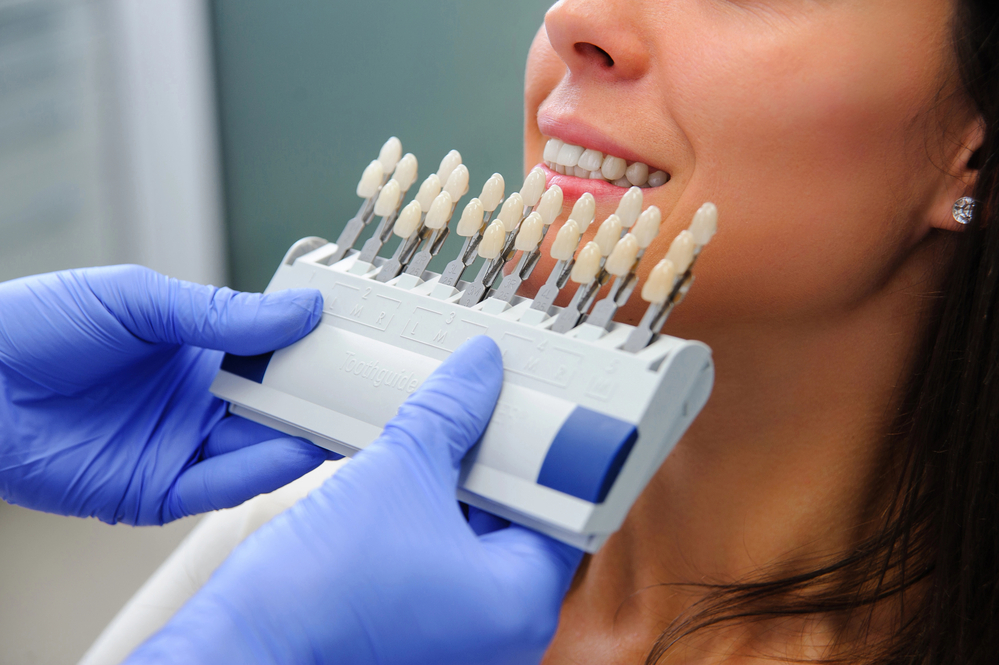
When most people think of straightening crooked teeth, the first solution that comes to mind is braces. Whether it’s traditional metal braces or modern clear aligners, orthodontics has long been considered the go-to for misaligned smiles. But in recent years, porcelain veneers have emerged as a popular and often faster alternative—especially for adults seeking a more cosmetic solution. So, can veneers really replace braces?
Let’s explore how porcelain veneers work, who they’re suitable for, and whether they’re the right option for you.
What Are Porcelain Veneers?
Porcelain veneers are thin, custom-made shells designed to cover the front surface of teeth. Made from durable, stain-resistant porcelain, they are bonded to your teeth to improve shape, size, and color—giving you a picture-perfect smile.
Originally created to fix chipped or discolored teeth, veneers are now commonly used in cosmetic dentistry to improve minor alignment issues, close small gaps, and create a more uniform appearance.
The Appeal of Veneers for Crooked Teeth
For patients dealing with mildly crooked teeth, porcelain veneers can provide a quick and highly aesthetic solution. Unlike braces, which require months or even years of wear, veneers can transform your smile in as little as two dental visits.
Key Advantages:
- Speed: While braces can take 12 to 24 months to complete, veneers typically take only 2–4 weeks from consultation to placement.
- Cosmetic Perfection: Veneers do more than straighten—they whiten, reshape, and smooth the appearance of your teeth.
- Comfort: No wires, no tightening, no soreness. Just a smooth, polished finish.
- Confidence Boost: Patients often report an immediate improvement in self-esteem after getting veneers.
This fast, confidence-boosting makeover has made veneers a strong focus in cosmetic dental marketing, especially on social media platforms where before-and-after transformations go viral.
When Veneers Might Replace Braces
Veneers are not a substitute for orthodontic treatment in all cases. However, for patients with mild to moderate misalignment, they can be a highly effective option.
Here are scenarios where veneers could replace braces:
- Slight crowding or spacing
- Small rotations of front teeth
- Asymmetrical or uneven teeth
- Stains or chips along with misalignment
In these situations, veneers offer a way to address multiple cosmetic concerns at once, unlike braces, which only adjust alignment.
When Braces Are Still Necessary
It’s important to understand that veneers don’t move teeth. Instead, they simply cover up imperfections. If your teeth suffer from severe misalignment, bite issues (like overbite or underbite), or structural problems affecting your jaw, braces or aligners are still the better choice.
Orthodontic treatment not only enhances appearance but also improves function, helps prevent future dental issues, and can positively affect long-term oral health.
That’s why any reputable dentist will begin with a thorough evaluation to determine whether veneers or braces—or sometimes a combination of both—is best for your specific case.
The Veneers Process
Getting porcelain veneers involves a few simple steps:
1. Consultation: Your dentist examines your teeth, discusses your smile goals, and determines if veneers are appropriate.
2. Preparation: A small amount of enamel is removed to make space for the veneers.
3. Impressions & Fabrication: Molds are taken and sent to a dental lab where your custom veneers are created.
4. Bonding: The veneers are permanently bonded to your teeth and polished to perfection.
The result is a natural-looking, durable smile that can last 10–15 years or more with proper care.
Costs and Considerations
One of the most significant differences between veneers and braces is cost. Veneers can be more expensive, especially since they’re usually not covered by insurance (as they’re considered cosmetic). However, many patients see them as a worthwhile investment in self-confidence and appearance.
Keep in mind:
- Veneers are irreversible: Enamel removal is permanent.
- They may need replacement over time.
- Good oral hygiene is essential to maintain your new smile.
Choosing the Right Provider
Because veneers are a cosmetic solution, choosing the right dentist is critical. Look for a provider experienced in porcelain veneers, preferably with before-and-after photos, patient testimonials, and a personalized consultation process.
Modern cosmetic dental marketing often emphasizes aesthetics—but don’t just fall for flashy ads. Make sure the dentist is transparent, listens to your concerns, and explains all your options.
Can Veneers Replace Braces?
In many cases, yes—porcelain veneers can replace braces, especially for adults with minor alignment concerns who prioritize aesthetics and speed. However, they are not a one-size-fits-all solution.
If you’re looking to improve your smile and wondering whether veneers or braces are right for you, schedule a consultation with a cosmetic dentist. They’ll help you understand your options and guide you toward a smile that’s not only beautiful but also healthy and functional.
A straight smile doesn’t always require wires and brackets. Sometimes, all it takes is a few expertly placed veneers to completely transform your appearance—and your confidence.




